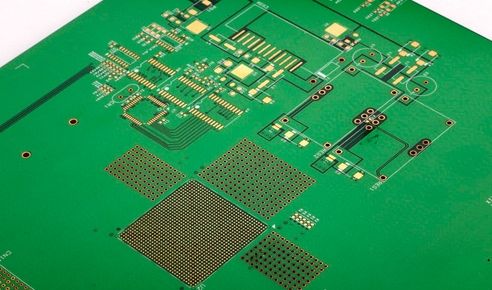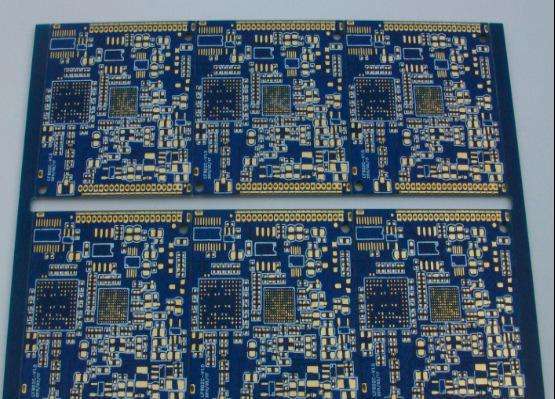Common Quality Problems and Solutions in PCB Solder Masking Process
Everyone in PCB design knows that solder mask is a layer of ink printed on the PCB surface. It not only plays the role of insulation, but also protects the copper surface. It also plays a beautiful and beautiful role. It is like wearing on the outside of the PCB. A piece of clothing, so any point of it is very easy to find, so solder mask is also the most likely to lead to customer complaints in all processes. In the PCB solder resisting process, smart and sophisticated you may also encounter a variety of quality issues. The following gives you a summary of some of the common problems of response measures, hoping to give everyone inspiration and help. Common as follows:
Problem: Infiltration, Blur
Cause 1: The ink viscosity is too low.
Improvement measures: Increase the concentration without diluent.
Reason 2: Silk screen pressure is too high. The
Improvement measures: Reduce pressure.
Cause 3: Bad squeegee.
Improvement measures: Replace or change the angle of the scratch screen printing.
Cause 4: The distance between the screen and the printing surface is too large or too small.
Improvement measures: Adjust the spacing.
Reason 5: The tension of the silk screen becomes smaller.
Improvement measures: Re-create a new screen.

Question: Sticky Film
Reason 1: The ink is not baked dry
Improvement measures: check the degree of ink drying
Reason 2: Vacuum is too strong
Improvement measures: check vacuum system (without air strip)
Problem: poor exposure
Cause 1: Bad vacuuming
Improvement measures: check the vacuum system
Reason 2: Improper exposure energy
Improvement measures: Adjust the appropriate exposure energy
Reason 3: Exposure temperature is too high
Improvement measures: Check exposure temperature (below 26°C)

Problem: Ink baking does not work
Reason 1: The oven exhaust is not good
Improvement measures: Check the exhaust status of the oven
Reason 2: The oven temperature is not enough
Improvement measures: determine whether the actual temperature of the oven reaches the required temperature of the product
Reason 3: Diluted diluent
Improvement measures: increase thinner, fully diluted
Cause 4: The thinner is too slow
Improvement measures: Use a matching thinner [Please use the company’s supporting thinner]
Reason 5: The ink is too thick
Improvement measures: Adjust ink thickness properly
Problem: White dots printed
Cause 1: White dots printed
Improvement measures: Thinner does not match Use matching thinner [Please use the company’s supporting thinner]
Reason 2: Closure tape is dissolved
Improvement measures: Switch to white paper
Problem: Over development (measurement)
Cause 1: Poison concentration is too high and temperature is too high
Improvement measures: reduce the concentration of the medicine and the temperature of the medicine
Reason 2: Development time is too long
Improvement measures: shorten the development time
Reason 3: Insufficient exposure energy
Improvement measures: increase exposure energy
Reason 4: Development water pressure is too high
Improvement measures: reduce the pressure of the developer
Cause 5: uneven ink stirring
Improvement measures: Stir ink evenly before printing
Cause 6: The ink is not dried
Improvement measures: adjust the baking parameters, see the question [ink baking]
Question: Green Oil Bridge Broken Bridge
Reason 1: Insufficient exposure energy
Improvement measures: increase exposure energy
Reason 2: The plate is not handled properly
Improvement measures: check processing procedures
Reason 3: Development, washing pressure too
Improvement measures: check the developing and washing pressure
Problem: Not developing properly
Reason 1: Too long time after printing
Improvement measures: control the placement time within 24 hours
Reason 2: The ink is depleted before development
Improvement measures: work in the darkroom before development (the fluorescent lamp is wrapped in yellow paper)
Reason 3: Not enough developer
Improvement measures: Insufficient temperature Check potion concentration, temperature
Reason 4: Development time is too short
Improvement measures: lengthen the development time
Reason 5: Exposure energy is too high
Improvement measures: adjust the exposure energy
Reason 6: Over-inking
Improvement measures: adjust the baking parameters, can not be baked
Cause 7: uneven ink stirring
Improvement measures: Stir ink evenly before printing
Cause 8: Diluent does not match
Improvement measures: Use a matching thinner [Please use the company’s supporting thinner]
Problem: bad on tin
Cause 1: Development is not clear
Improvement measures: Improve the factors of unclean development
Reason 2: post-baking solvent contamination
Improvement measures: increase oven exhaust or spray cleaning before spraying
Question: After baking oil
Reason 1: No batch baking
Improvement measures: step baking
Reason 2: Poor ink viscosity is not enough
Improvement measures: adjust the ink viscosity
Problem: Tin foaming
Reason 1: over development
Improvement measures: Improve the development parameters, see the question [overexposure]
Cause 2: The plate is not well treated before, and there is oil on the surface. Dust
Improvement measures: Do a good job of pre-treatment to keep the surface clean
Reason 3: Insufficient exposure energy
Improvement measures: Check exposure energy, in line with ink usage requirements
Cause 4: Abnormal flux
Improvements: Adjusting flux
Reason 5: After baking is insufficient
Improvement measures: check the post-baking process
Problem: Ink discoloration
Cause 1: Insufficient ink thickness
Improvements: Increase ink thickness
Reason 2: substrate oxidation
Improvement measures: check the pre-treatment process
Reason 3: After the baking temperature is too high
Improvements: Time is too long Check baking parameters
Problem: Ink Matte
Cause 1: Diluent does not match
Improvement measures: Use a matching thinner [Please use the company’s supporting thinner]
Reason 2: Low exposure energy
Improvement measures: increase exposure energy
Reason 3: over development
Improvement measures: Improve the development parameters, see the question [overexposure]
Problem: Blocking the Net
Cause 1: Dry too quickly.
Improvement measures: Add slow-drying agent.
Reason 2: The printing speed is too slow.
Improvement measures: Increase speed and slow drying agent.
Cause 3: The viscosity of the ink is too high.
Improvement measures: Add ink lubricant or special slow-drying agent.
Cause 4: The thinner is not suitable.
Improvement measures: Use the designated diluent.
Problem: Ink adhesion is not strong
Cause 1: Inappropriate choice of ink type.
Improvement measures: Use appropriate ink.
Cause 2: Incorrect ink type selection.
Improvement measures: Use appropriate ink.
Cause 3: The drying time, temperature is incorrect, and the amount of exhaust air during drying is too small.
Improvement measures: Use the correct temperature and time, increase the amount of exhaust.
Cause 4: The amount of additive is not appropriate or correct.
Improvement measures: Adjust dosage or use other additives.
Cause 5: The humidity is too high.
Improvement measures: Improve air dryness.
